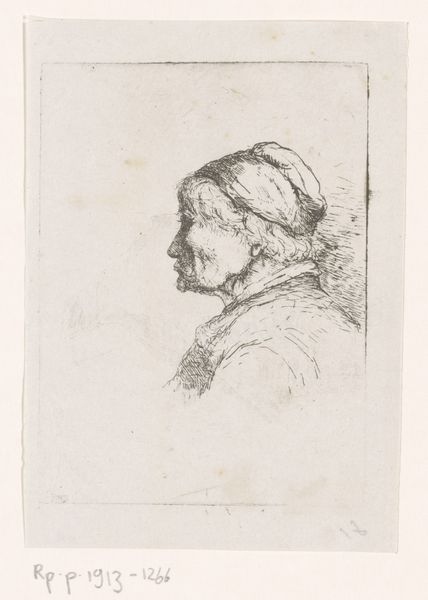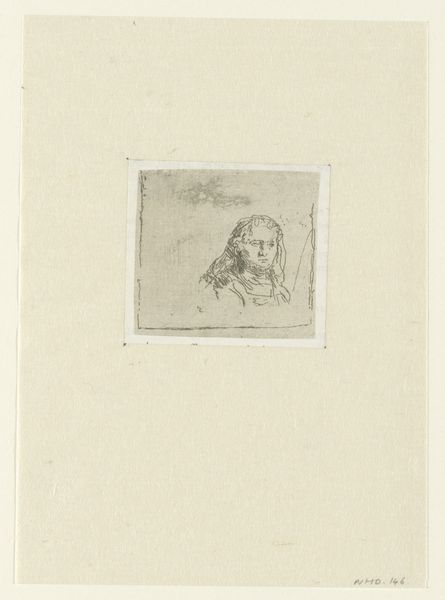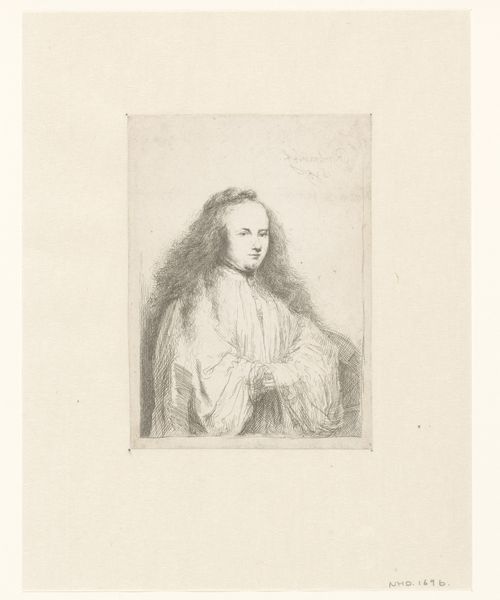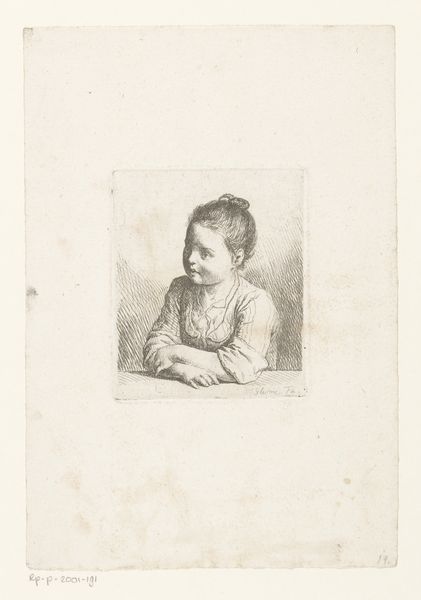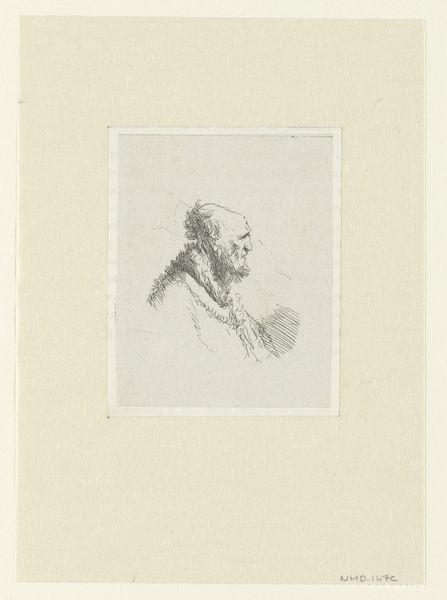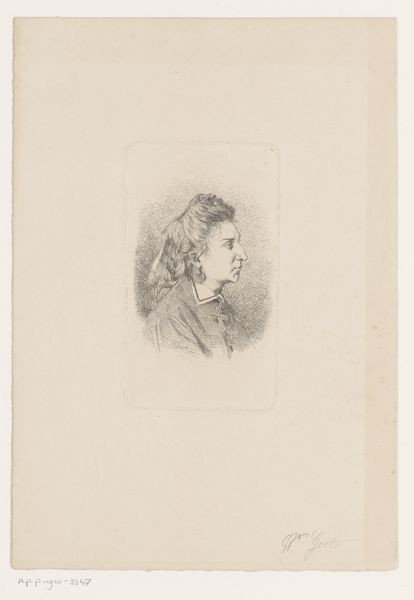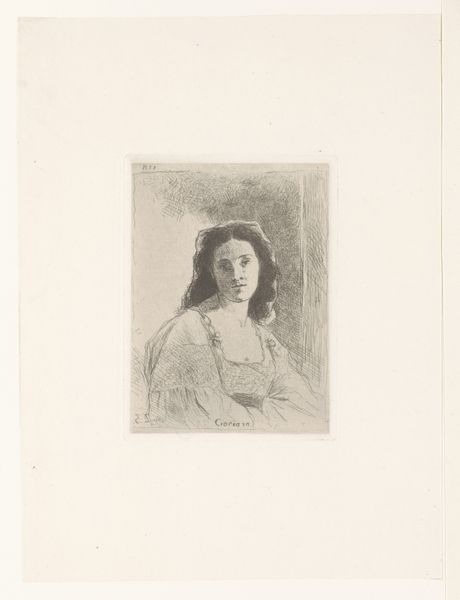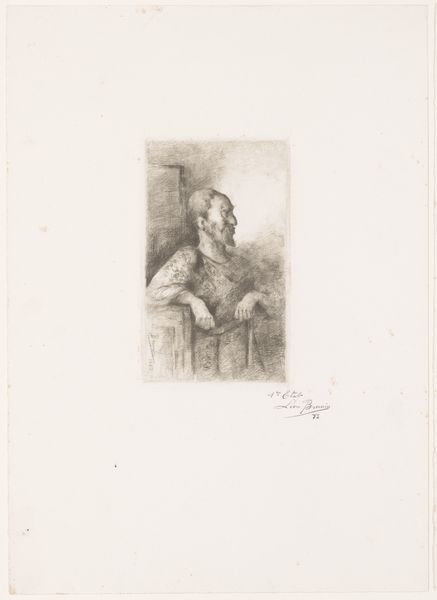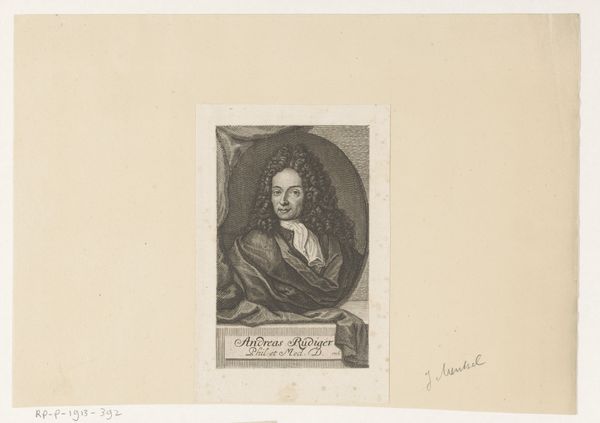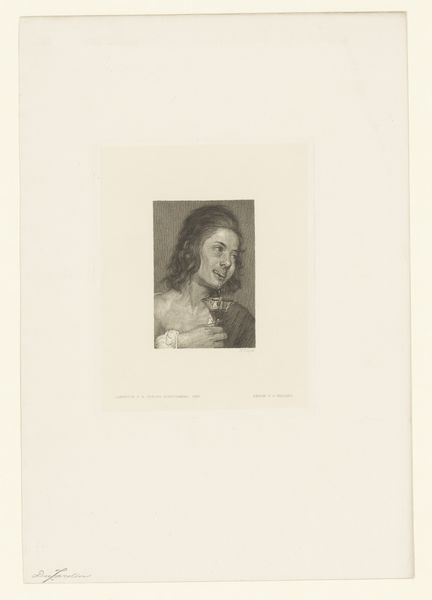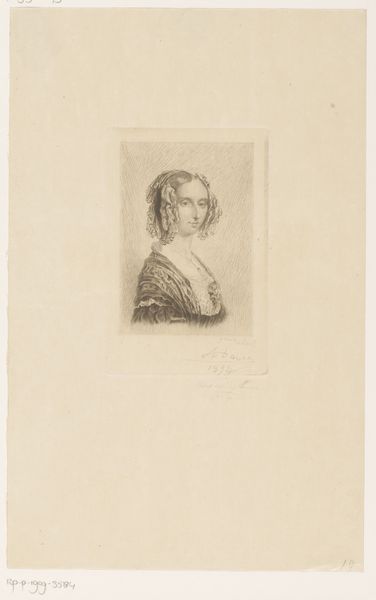
Dimensions: height 68 mm, width 67 mm
Copyright: Rijks Museum: Open Domain
Editor: Here we have Léopold Flameng’s pencil drawing from 1859, "The artist's mother, head and bust: three quarters right". It's a sensitive portrait, but I’m struck by how the material of pencil, typically used for sketches, becomes the final product here. What stands out to you? Curator: Well, consider the humble pencil itself. It's readily available, a common tool, democratized compared to oils or even charcoal at the time. This elevation of a 'lesser' material points to a fascinating shift in artistic values. The hand of the artist is so present in the texture. Editor: How so? Curator: Notice the varying pressure of the pencil. Some lines are assertive, defining the structure of the face, while others are light, almost hesitant, suggesting the soft fabric around her neck. It makes you wonder about the physical act of creation, doesn’t it? How long did it take? What was Flameng feeling? What were the conditions in his studio? The material betrays these questions. Editor: That’s a really good point. I hadn't considered the labor involved so directly. So, in that light, the "finish" isn’t really the most important thing... Curator: Exactly! It challenges traditional art hierarchies, where polished, seemingly effortless works were prized. This raw quality emphasizes the artist's process and, in a sense, democratizes art-making itself. It speaks to a broader social movement towards valuing labor and the everyday. And of course how materials affect how people feel about the artwork. Editor: This gives me a lot to think about, especially how everyday materials can carry so much weight. Thanks for illuminating this! Curator: My pleasure. It's often in the ‘simple’ things where the real complexities reside.
Comments
No comments
Be the first to comment and join the conversation on the ultimate creative platform.
